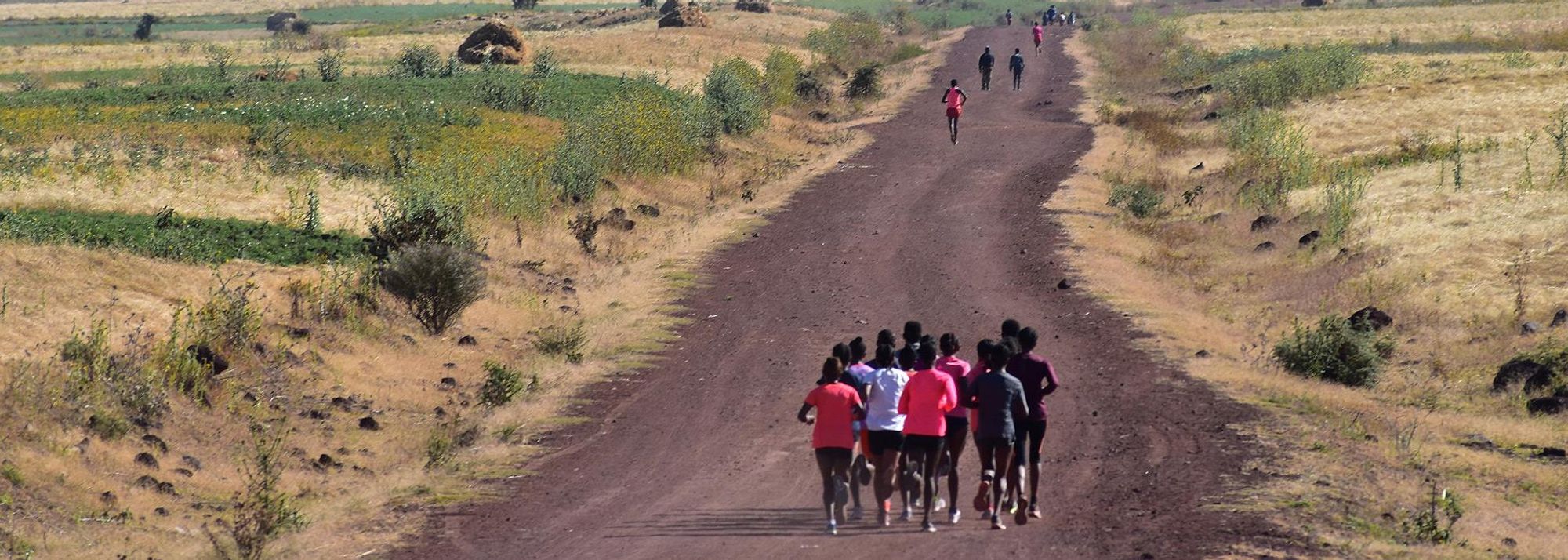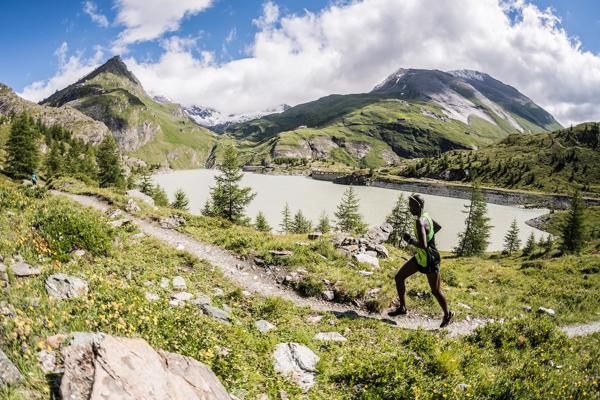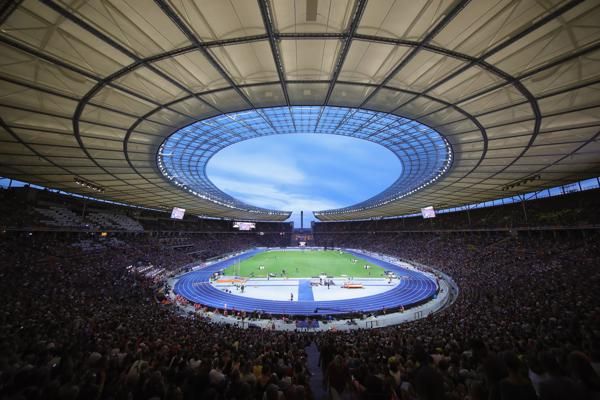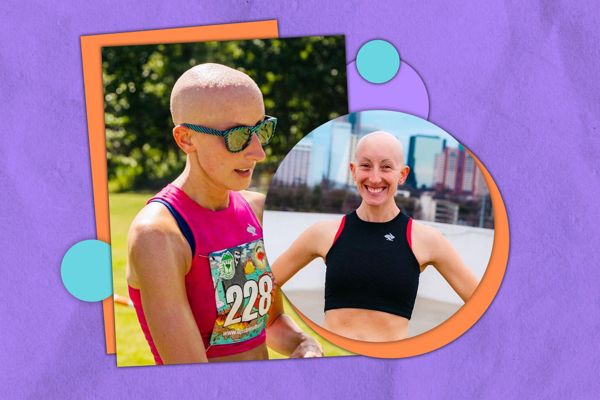A group of athletes run through Sendafa (© Cathal Dennehy)
Nine years after befriending an Ethiopian refugee in Ireland, Cathal Dennehy headed to Ethiopia – land of the runners – and joined in with a few training sessions alongside some of the world's elite.
I can’t keep up. As I chug across the rolling grasslands of Ethiopia, it takes about 45 seconds before I’m painfully aware of my own absolute, overwhelming and slightly mortifying mediocrity.
Up ahead – close enough to hear my rasping, wheezing breaths but not close enough to ask if I’m actually dying – a horde of high-level distance runners are coasting across the landscape at a pace of 4:50 a mile, or 3:00 per kilometre.
It’s November 2018, three days since I had my ass politely handed to me by several thousand runners in the Great Ethiopian Run, and I’ve come here – to a village on the very outskirts of Addis Ababa – to get an extra insight into how these masters of endurance operate.
I’ve also come to visit my friend.
Back in 2009, when I was trying – and failing – to not be a mediocre distance runner, I got to know an Ethiopian refugee in my home city of Limerick, Ireland. Lebeta Debela had fled his nation the previous year and was a decent if not elite distance runner, one I trained with three times a week. He had very little English at the time, while my Amharic is, ehm, less than fluent (zero words).
But sometimes the universal language of running can transcend that. We’d warm up together, try to smash each other in the ensuing session, then high-five at the end of it and do our best to learn more about each other’s lives as we cooled down.
He was forced to leave Ireland and return to Ethiopia a year or so later, and as he did so he dreaded the conflict he was returning to at home. We stayed in touch over the years – the odd phone call and lots of Facebook messages – and each time we did I noticed the improvement in his English.
When we trained together, he’d try his best to tell me what it was like in Ethiopia – the huge groups of athletes churning out runs, as many as 150 galloping all as one – and I always figured it was something I had to see to believe.
Late last year, I finally did.
It was a Wednesday morning at 8am when he arrived to my hotel, his uncle driving the car and the two of them explaining to this ignorant tourist – who had done no actual research – all about their home city of Addis Ababa.

Athletes training in Meskel Square in Addis Ababa
One of the first things you realise is most Ethiopian runners want to live in Addis Ababa, but no one really wants to train there. It’s far too hectic, noisy and filled with traffic for most distance runners to enjoy, so many lower-tier athletes are forced to run back and forth across the steps of Meskel Square to get the miles in – several hundred on any given evening.
As such, many more elite-level athletes try to live on the outskirts, where city turns to countryside and they can either take a short car journey or run from their door and coast across the serene, green landscape while filling their lungs with thin, crisp air.
Lebeta was one of those athletes, and along the way to his home he pointed out the houses of world-beating athletes who lived nearby: Yomif Kejelcha, Lelisa Desisa, Feyisa Lilesa.
His home was basic but perfectly adequate and the small town, Burayu, was populated with hundreds of runners. We arrived just after 9am and he noted we were late for the group run, so would have to hightail it across the plains to intercept them.
That day, the group would run for an hour at a progressively increasing pace, circling around a 4K loop that everyone seemed to know – everyone except me.
I soon saw them approaching and immediately peed my shorts (figuratively, of course).
Like a kid on his first day at school, I slotted in at the back and hoped no one would notice as Lebeta joined the pack and explained – at least I think – who the wheezing white guy was at the back.
We were going at about 5:30 pace per mile, which I coped with for all of two minutes before slowing to a stop and wondering what I was doing with my life.

Athletes running in Kella Town
On they went, the group of about 40 whittling down with each lap as the pace cranked up. When they came past again, I rejoined the back of the group, and this time my GPS showed they were going faster than five minutes per mile, which, at an altitude of 2,600m/8,500ft, had me burnt alive in less than a minute.
And so I stopped again, jogged around at a (much) more sedate pace, and watched as the group reduced to just three athletes entering the final 10 minutes. By this stage Lebeta had also been burnt off, so he joined me on my jog.
“Why don’t you join in with them again for the last bit?” I asked, and he looked at me like I’d suggested throwing rocks at them for entertainment.
“No, no, never do that,” he said. “Shame.”
Once we’d finished, he gave me the rundown of who was in the group – and I realised that for three or so minutes I’d been chasing (in vain) the 2016 Olympic marathon silver medallist Feyisa Lilesa.
In what other sport, I thought, could an average Joe rock up and train with the world’s best? And not only that, but receive nothing but handshakes and smiles and nice-to-meet-yous – this despite me breaking the cardinal rule and joining in again after taking a lap off. For shame.
As we headed back to Lebeta’s place he pointed out other runners whizzing by – there was Ibrahim Jeilan, who out-kicked Mo Farah to win the world 10,000m title in 2011 – and many others whose names rang a familiar bell.
We decamped to a local restaurant where Lebeta and his uncle ordered (what I think was) beef, a dish that came plonked in the middle of a giant piece of injera, the flatbread made from teff flour that is a staple of Ethiopian cuisine. It was delicious. After an afternoon of sightseeing and a visit to a natural spring in Ambo – highly recommend this – Lebeta and his uncle brought me for lunch at their family home, where we met two keen young runners, aged 10 and eight.
I watched later as they joined two of their friends at a local green area and went through a warm-up of jogging, followed by various drills and then several 300m reps on a cross-country loop. The best of them, a 10-year-old girl called Misgana Bekele, won an underage section at the Great Ethiopian Run the previous weekend and, with a name like that, I made sure to note it for the future.

Young runners in a field in the suburbs of Addis Ababa
When the day was done and Lebeta and his uncle dropped me back to the hotel, there were hugs exchanged and promises made that we wouldn’t leave it eight years next time, my hosts refusing to accept a single cent towards the cost of our meals or travel.
That, above all, left a lasting impression about Ethiopians, the most hospitable people I’ve come across. There was always a warm welcome.
It’s what I and fellow journalist Weldon Johnson of Letsrun.com received a few days earlier when we tagged along with a group managed by Daan van den Berg of Global Sports Communication. This time, I didn’t even attempt to keep up, happy to coast along in the van as the few-dozen-strong men’s and women’s groups churned out their 20-mile run.
We were told by Van den Berg to meet at a specific roundabout in Addis Ababa at 5:30am, and sure enough, as we stood there in darkness, a van pulled up filled with athletes.
We drove for about an hour out of the bustling city and when we arrived in Sendafa, the sun was slowly peeking over the horizon. At 6:45am, the group’s coach Getaneh Tessema blew a whistle and all runners gathered in a circle, the coach and his assistant Assefa Mezgebu – best known for winning Olympic 10,000m bronze in 2000 behind Haile Gebrselassie and Paul Tergat – cracking jokes before they outlined the day’s work.

Head coach Getaneh Tessema (right) and assistant coach Assefa Mezgebu (left) with their training group in Sendafa
Then off they went, hordes of the world’s best, with two-time London Marathon champion Tsegay Kebede leading the way at a steady six minutes per mile.
Over the next two hours, we saw about 300 athletes out there churning on the roads, this being only one of three key areas that runners train in outside Addis Ababa. We even saw a group of Ethiopian race walkers, five of them hurtling by and offering a glimpse into what the future could hold if this nation of runners decides to channel more talent into that event.
When the group run was complete, the athletes downed what remained of their drinks and changed alongside the road – with men and women separated by about 50 yards – and then they were back into the van for the drive back to Addis, 20 miles in the legs and the clock yet to strike 10am.
Seeing it all in person, it was hard not to feel lazy, even a tad guilty about the undeniable privilege that many others don’t enjoy.

Athletes training in Sendafa
It was, above all, a reminder not so much how hard athletes in Ethiopia work – back in Ireland I knew several distance runners who trained just as hard, organising their lives around this pursuit with the same obsession – but it’s the sheer volume of those doing it that leaves a lasting impression.
Thousands upon thousands, churning out 100 miles a week or more in places where there are no distractions, where nothing else seems to matter other than trying to keep up a little better today than you did yesterday. Do that and maybe one day you can be one of the men or women left at the front of your group, which means you’re not far off the best in the world.
It’s a place where the attitude rubs off and leaves you all the better for experiencing it. A place where everyone, no matter how fast or slow, is a dreamer.
How to: run in the footsteps of greats in Ethiopia
One of the most popular training destinations for foreign runners is Sululta, a small town outside Addis Ababa which is surrounded by hills and eucalyptus forests and can be reached by private taxi for US $20 (or a lot cheaper if you’re able to work out the public bus system, which I did, but only with the help of a local).
A popular choice of residence near Sululta is Yaya Village, which is owned by Ethiopian great Haile Gebrselassie, and running guides are available to show you the ropes of the locality.
Another hotspot for distance runners is Entoto, where many groups go hill training. If you’re willing to venture further afield, try visiting Bekoji, the so-called Town of Runners.
While searching online about various locations and talking to those who’ve been there is your best bet for research, you’ll likely find most running groups and coaches are extremely open and offer a warm reception to runners who show up without an invite (guilty as charged).










